When businesses start looking at automation platforms, the first question is usually, “What can this tool do for me right now?”, but that’s only half the picture. The real question you should be asking is, “What happens when I need it to do more?”; the tools that work well today can fall apart as your workflows grow, your data increases and your needs get more complicated.
This is where scalability matters, and where low-code platforms can start to reveal their limits.
Make.com (Make for short) is widely loved for its flexibility, affordability, and visual automation builder. It’s an excellent choice for smaller to medium-sized non-technical teams looking to replace repetitive tasks with smarter workflows, or even for technical teams to automate basic tasks. But the extent to which it can cope with larger datasets and increasingly complex automations, while simultaneously taking pricing into account, is how scalability can be tested.
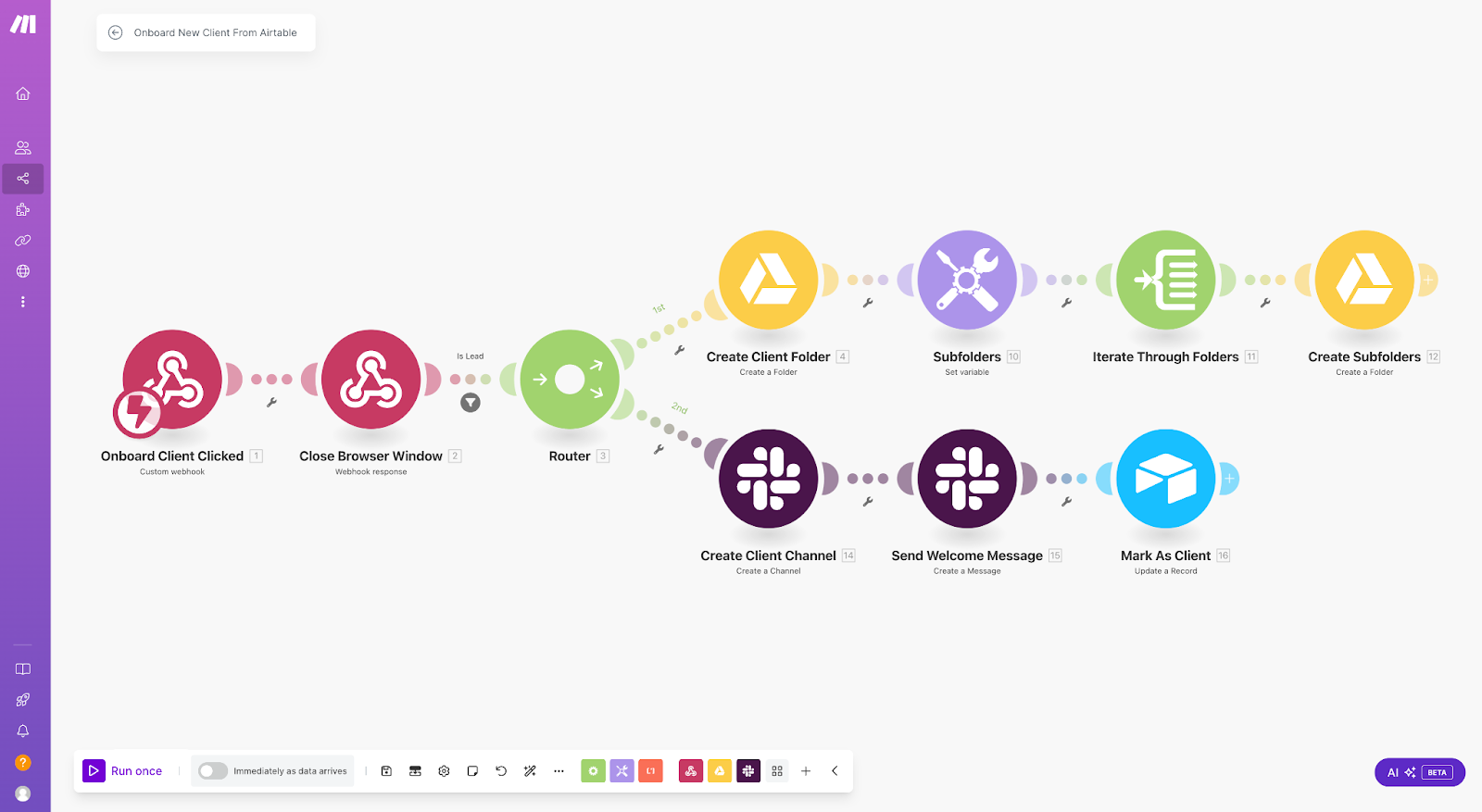
In this article, we’ll assess Make’s scalability through the lens of four key areas that determine whether Make can grow with you—or if you’ll hit its limits sooner than you expect:
The 4 Layers of Automation Scalability
- Data scalability: How well does the platform handle increasing amounts of data, steps, and workflows? Can it reliably execute automations that run frequently or require real-time responsiveness? Can it support custom integrations? Does the platform integrate easily with the tools you use now—and the tools you might add as you grow?
- Flexibility: Does the platform allow you to build and customize workflows as your processes become more complex? How well does it support advanced logic, customization, or programming in enhancements?
- Affordability: Does the platform’s pricing scale alongside your usage, team size, and growing operations? Are there hidden costs or limitations that make scaling more expensive than expected?
- Security and Compliance: Does the platform meet the security standards you need to protect data and workflows as you scale? Can it adapt to strict compliance requirements, like data hosting options or advanced access controls?
So how well does Make hold up when you put these layers to the test? Let’s break it down, but first, here’s some important context on Make to set the scene:
- Make makes (for want of a better word) process automation feasible for non-technical teams - to use it, no prior programming knowledge is required, and its drag-and-drop interface facilitates intuitive automation building.
- While it’s a low-code platform, it offers both simple and complex automations, conditional logic, multi-step processes and advanced functionalities.
- It’s cloud-based, meaning software runs on remote servers; your automations keep running in the background, even when your computer is off.
- It has a very broad integration library; you can connect to over 1,900 applications and services.
- In terms of pricing, its lower tiers are very accessible in comparison to its competitors, but the pricing structure becomes a bit less appealing at enterprise level.
| Company Type / Scalability Layer | Average Score (1–5) | Summary |
|---|---|---|
| Personal Use | 4.8 | Make.com is an excellent choice for individuals or freelancers managing simple, lightweight automation tasks. It offers a generous free plan, broad integration support, affordability, and user-friendly flexibility. Security is sufficient for personal use. |
| Small Non-Technical Teams | 4.4 | A great platform for small teams with simple and moderately complex automations. Its visual interface is easy to use, and pricing is highly affordable. |
| Small Technical Teams | 3.9 | Make.com works well for technical teams handling basic to moderate automation needs. However, limited scripting options and less control over advanced logic and optimization may become a constraint as workflows grow. |
| Startups | 4.2 | A great platform for startups creating simple and moderately complex automations. Its visual interface is easy to use, and pricing is highly affordable. |
| SMBs | 2.9 | Small-to-medium businesses will find Make suitable for mid-tier automation needs. However, the lack of affordable enterprise-level features (like SSO) and performance bottlenecks may become significant pain points as the company scales. |
| Enterprises | 2.6 | Enterprises will likely find Make insufficient for large-scale operations due to performance limitations, lack of full self-hosting, and essential features like SSO locked behind an expensive paywall. More robust platforms are recommended for enterprise needs. |
Data Scalability
When we talk about Make’s data scalability we’re referring to its ability to efficiently handle increasing volumes, velocity, and variety of data, encompassing both integration and performance.
Integration
Integration scalability is essentially how well a platform connects with the tools you already use—and whether it can keep up as your processes and tool stack grow.
Make connects natively to over 2,000 applications, covering most of the tools you’d expect across marketing, sales, IT, and operations. And, for most businesses, that’s plenty. But if you’re chasing sheer volume, Zapier will still take the crown, with its 7,000+ integrations. That said, raw numbers don’t tell the full story.
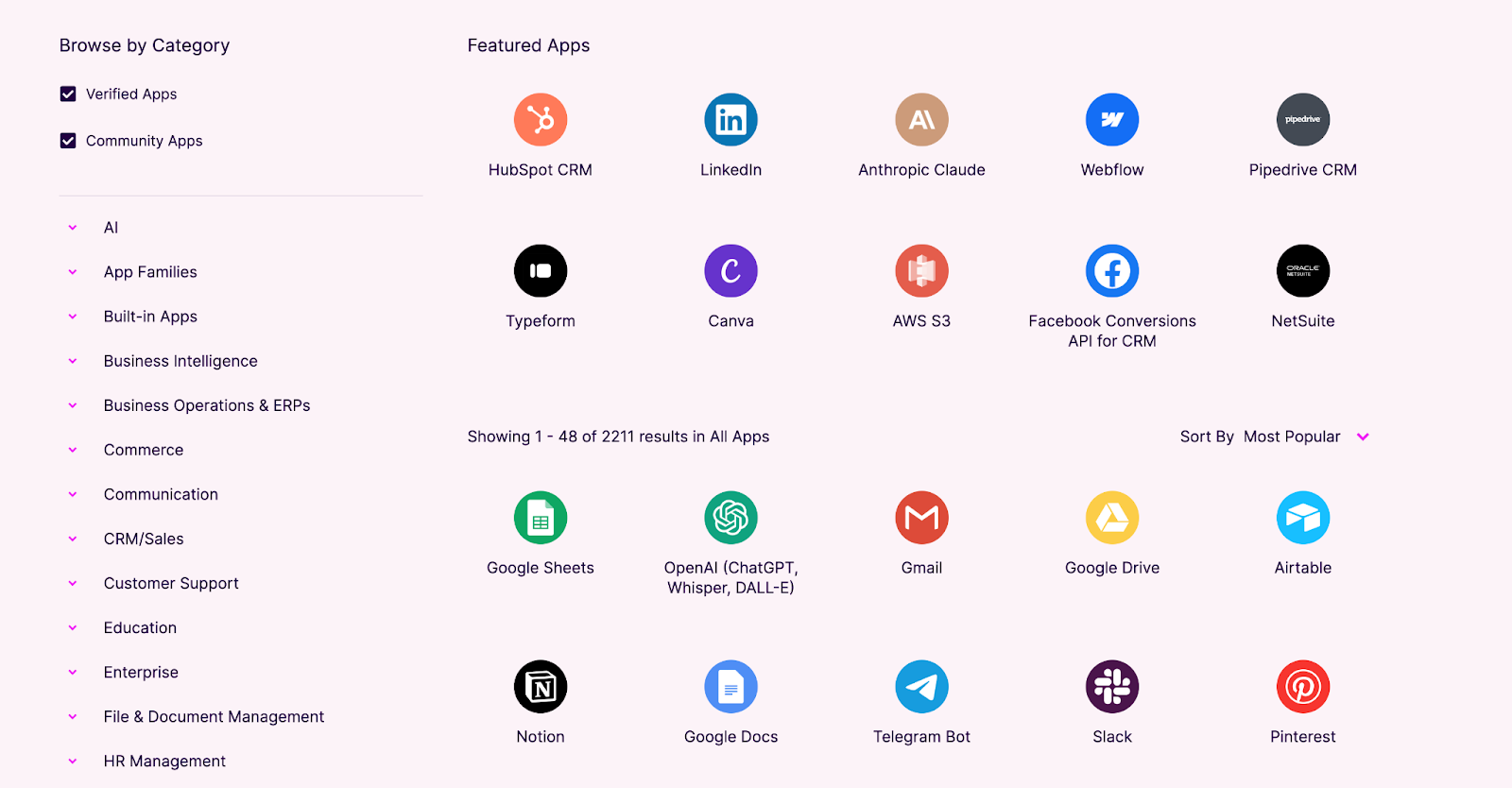
Here’s the reality: having more integrations doesn’t always mean better integrations. Zapier’s library is bloated with tools most businesses will never touch. Make, on the other hand, is more strategic with the integrations it offers. As such, it provides: high-demand tools early and covers the essentials for most teams. The real question is: does it integrate natively with your tool stack?
For tools not natively supported, Make offers you HTTP modules, Custom Apps, and webhooks to connect to any app with an open API. That’s great if you’re working with niche tools or custom platforms. The tradeoff? All of these options require some technical know-how. If you don’t understand APIs or JSON, setting these up—and troubleshooting them when they break—will slow you down.
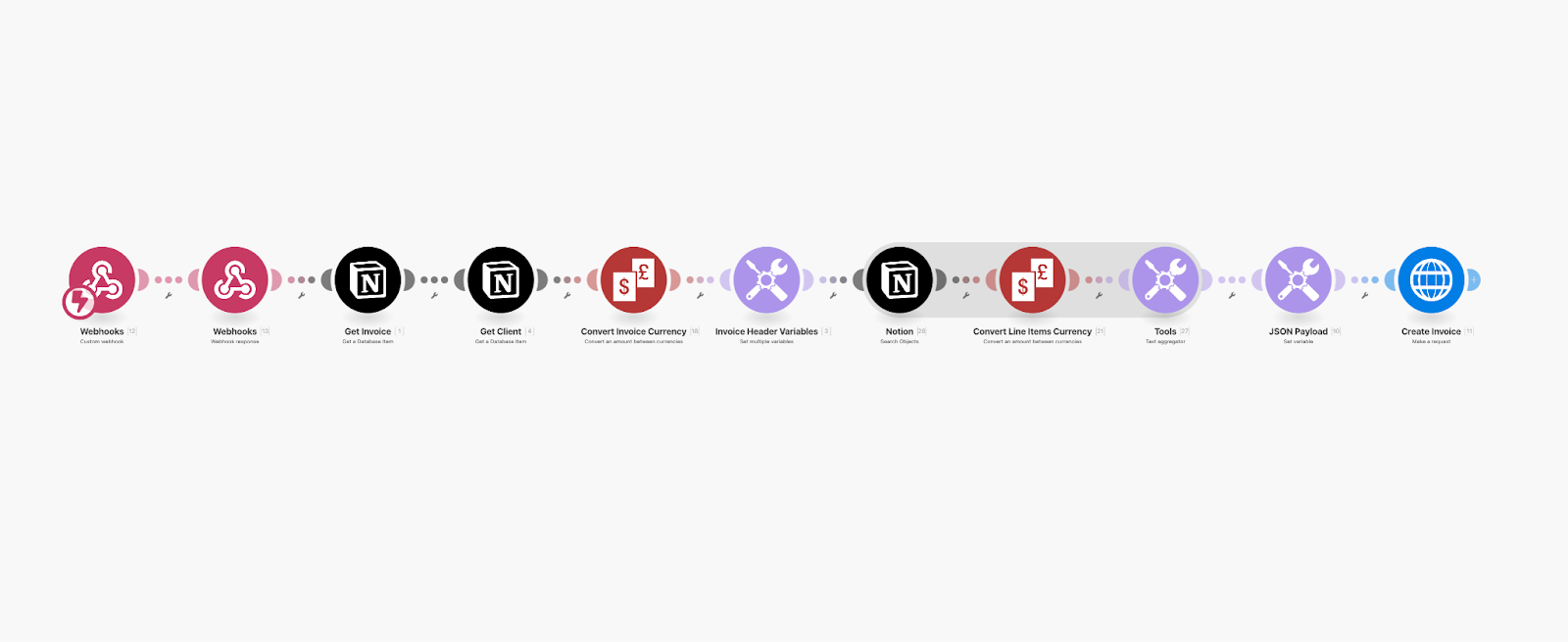
Custom connections also require more ongoing maintenance. Native integrations are more reliable and require less upkeep, while webhooks, Custom Apps and HTTP modules add complexity that can become a real headache over time—especially if they’re powering critical workflows.
Performance
Now, onto performance scalability. This is all about how well a platform handles increasing complexity, data volume, and the size of automations as your needs grow. Make performs really well… until it doesn’t. It handles smaller and medium-sized workflows with moderate data load and programming complexity really well. Execution times remain quick, and performance is reliable.
But as you scale, performance starts to dip. Here’s where things break down:
- Large datasets: If you’re processing thousands of records or dealing with data-heavy workflows, Make slows down. Without batching or filtering upfront, you’ll hit performance thresholds fast.
- Complex automations: As you add more branches, conditional logic, and heavy JSON processing, workflows start to drag. Data stores (Make’s integrated database option), while useful, can also add delays when you’re dealing with larger volumes.
- High-frequency runs: Automations triggered with high frequency—for example every minute—start to get sluggish. If you’re dealing with a lot of operations, the lag becomes hard to ignore.
Compared to code-based solutions, you don’t get fine-grained control over how tasks are executed or optimized with Make. With traditional code, you can parallelize tasks, compress data processing, and trim inefficiencies. In Make, you’re stuck with its engine, and when workflows get heavy and complex, that engine starts to choke.
If you know how to code, you have access to greater control under the hood with platforms like n8n or Pipedream; you can optimize for speed and scale without relying on rigid, sequential workflows. When it comes to Make, that kind of agency just isn’t at your fingertips, and you feel it as your automations grow.
Flexibility
Visual interface
Flexibility in scalability is about how much freedom a platform gives you to customize and expand your workflows as your needs evolve. For non-technical teams, Make does a fantastic job. Its visual builder makes it easy to create multi-step workflows with branches, conditional logic, fallback routes, and triggers. If you’re looking for a platform that strikes a balance between usability and functionality, Make delivers. But for technical users, it will often not be enough.
Low-code can be limiting
The thing is, Make’s low-code nature can limit the developer. There’s no real scripting support beyond JavaScript, and even that comes with restrictions and is only available on the Pro plan and up. On the other hand, competitors like Pipedream let you write in multiple languages, Node.js, Python, Golang, Bash and more, which gives developers far more control. In Make, if you want to perform advanced data manipulation or logic, you’re often forced to hack together workarounds using multiple modules. It works, but it’s clunky.
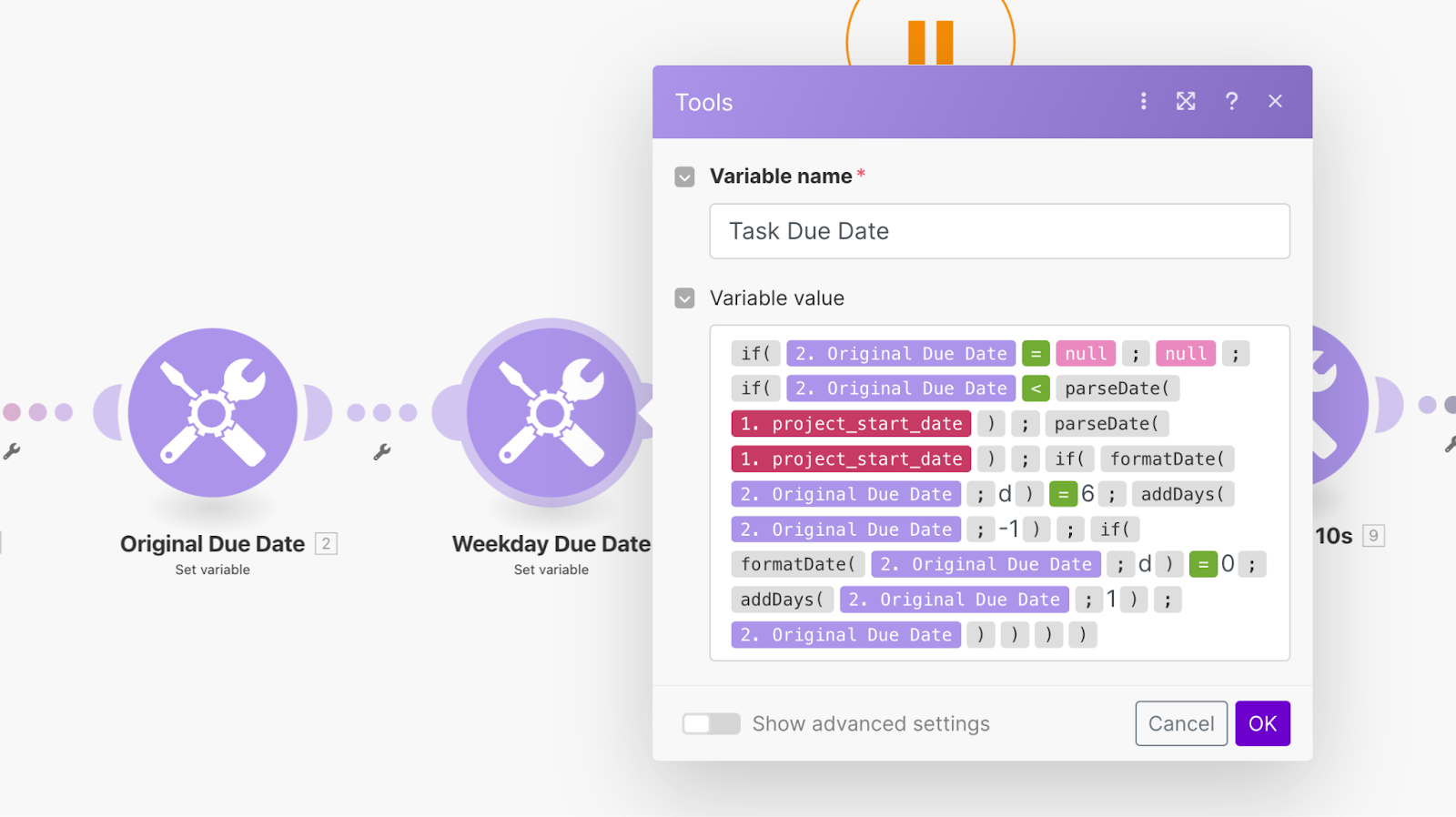
The result? You either end up with overly complex workflows or you call an external API to process the data and send it back to Make. This adds an unnecessary layer of friction and slows things down, especially when you’re building out more sophisticated automations.
Affordability
Pricing is always a key factor when evaluating scalability. A platform’s cost should scale with its value, staying sustainable as your operations expand.
Make is one of the most affordable platforms in the industry—until you reach the Enterprise plan.
The Core plan starts at around $11/month, and the Pro plan comes in at $19/month, which is notably lower than competitors like Zapier and Pipedream. Both plans offer significant functionality for non-technical teams, individuals, and small to medium-sized businesses, setting Make apart as an obvious choice if you’re automating core processes on a budget. For most teams, these plans hit the sweet spot.
But here’s the issue: if you need Single Sign-On (SSO), which is arguably a pretty basic security option for many small companies, you’re looking at a massive jump to the Enterprise plan, which starts at a staggering $10,000/year. That’s not just a big leap—it’s a brick wall for SMBs. Going from $30/month to $10,000/year for one feature feels wildly out of proportion.
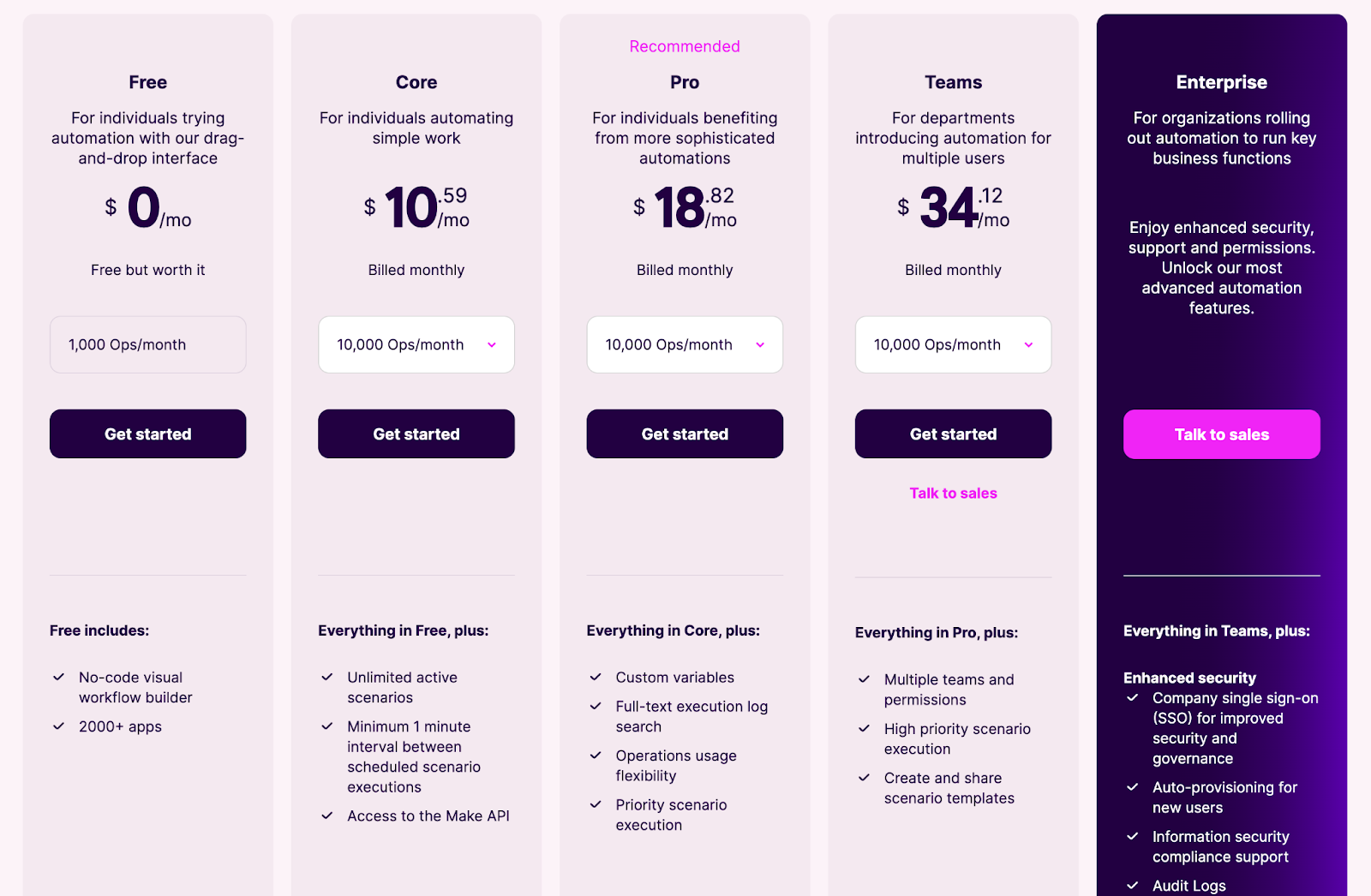
This pricing structure puts SMBs in a frustrating position. If you’re happy with Make’s functionality on the lower plans but need SSO, you’re forced into a cost tier that simply doesn’t make sense. There’s no middle ground.
Security and Compliance
Security and compliance are critical for scaling businesses, especially in regulated industries like healthcare or finance.
Make offers the basics: 256-bit encryption and 2FA are standard across all plans, and if you’re on the Enterprise tier, you get additional protections like Single Sign-On (SSO) and an on-premise agent. Make is also GDPR and SOC 2 compliant, which checks most boxes for standard security needs.
The main drawback, though, is that Make doesn’t support full self-hosting. The on-premise agent (which is only available on Enterprise) isn’t the same as running the platform entirely on your own servers, which is a dealbreaker for companies with strict compliance or data sovereignty requirements.
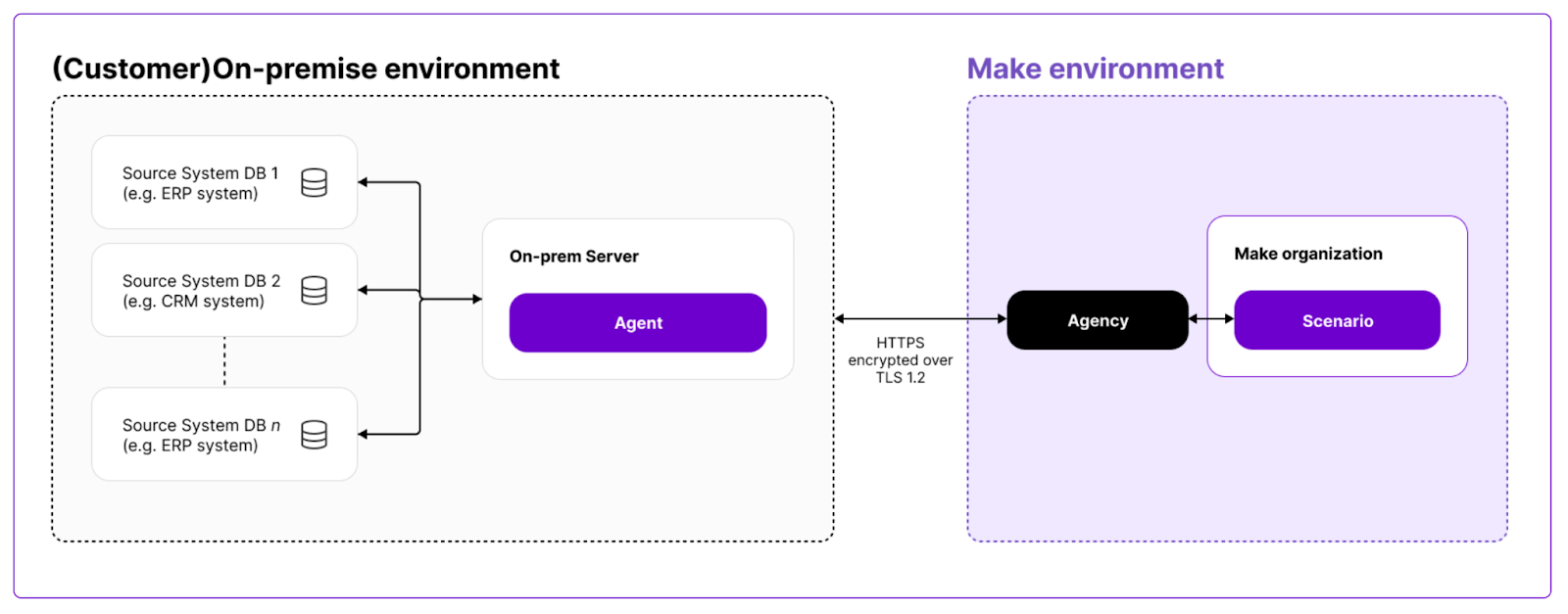
If self-hosting is a must, n8n is probably the better option. You can deploy it on your own servers, giving you full control over where your data sits and how it’s managed. That’s a big advantage for businesses in heavily regulated industries.
The final verdict: is Make scalable?
Make does a lot well. It’s very affordable for smaller to medium-sized teams, it’s user-friendly for non-technical users, and flexible enough to cover a wide range of workflows across different areas and industries. If you’re automating basic to moderately complex processes, Make is a fantastic tool to get the job done.
But as you scale, whether it’s with bigger datasets, more frequent automations, or more complex logic, performance slows, technical users hit walls with limited scripting support, and essential features like SSO are locked behind an enterprise paywall that doesn’t make sense for most SMBs.
For businesses with straightforward needs and teams that don’t need very heavy customization, Make scales really well. But for those growing into Enterprise-level operations, or who need more control over their workflows and data, the performance, customization and security limitations become hard to ignore.
Ultimately, the right automation platform depends on where you are now and where you’re going next. Make might fit your needs perfectly today, but if you’re planning for serious growth, it’s worth asking yourself: how far will Make take you, and when might these limitations start to hold you back?
Ready to start building with Make? Follow our tutorials to learn more about getting started, or for more advanced users, learn how to build automations best with Make.
Or, if you'd like to know more about automation software, internal tool building platforms, you can learn more on our Tools page. We have write-ups about platforms across the technicality scale, from no-code platforms like Notion and Airtable, to developer tools like Retool and Windmill.



